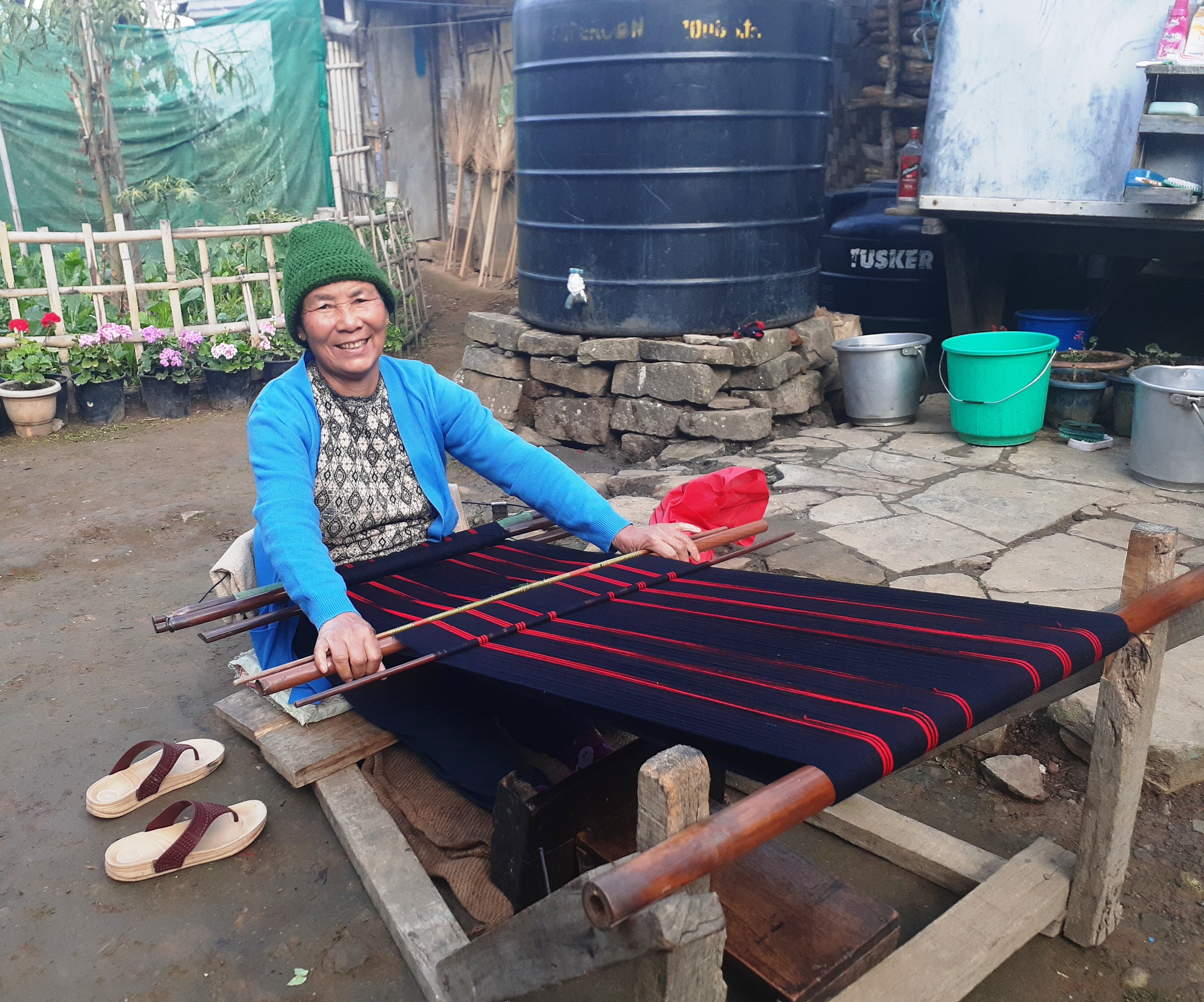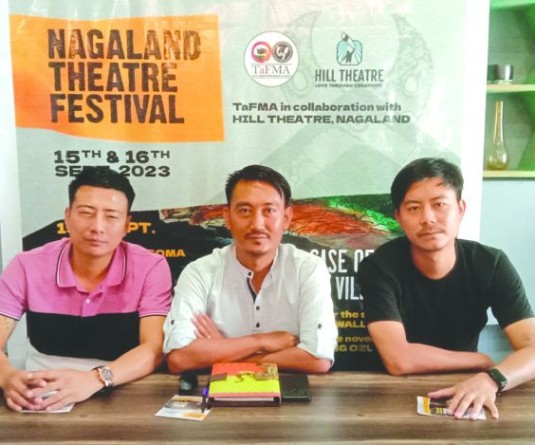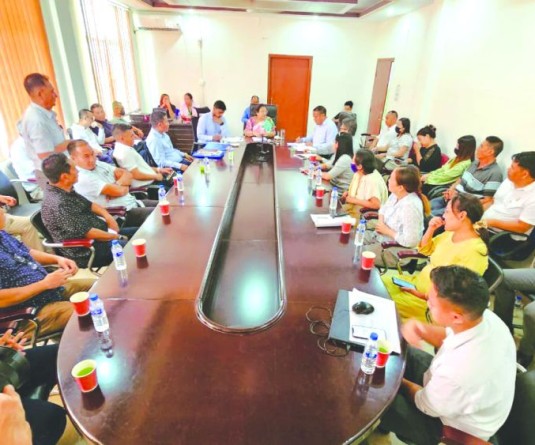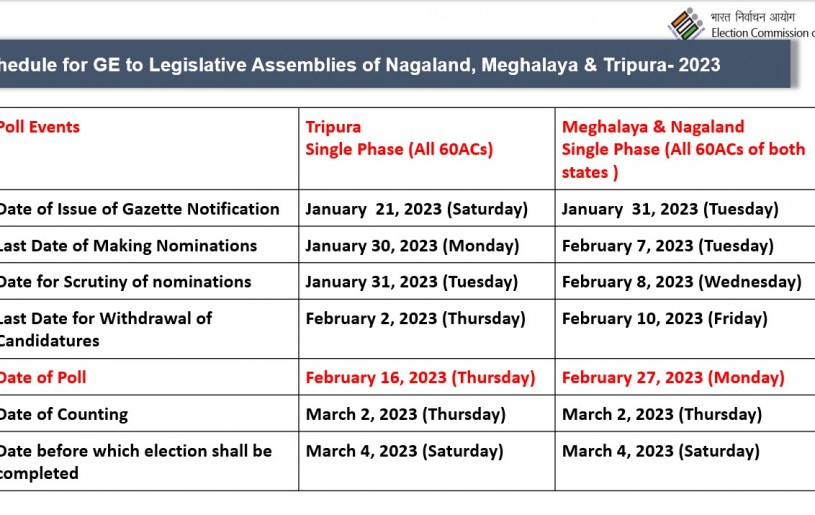A ‘Guru’ and her love for weaving

Punalemla weaving a traditional shawl at her home in Kumlong Ward, Mokokchung. (Morung Photo)
Longrangty Longchar
Mokokchung | February 2
There was a time when every boy had to learn the art of bamboo or wooden craft making and every girl the art of weaving. Not anymore. Most of the present generation nowadays, especially in the towns, are into smart phones and other gadgets and are losing touch with the traditional arts and crafts practiced by their forebears.
Amidst the hustle and bustle of modern society, in a small corner in Mokokchung town, a sixty-nine year old single mother strives to keep the traditional art of weaving exquisite traditional shawls and mekhalas (wrap around) alive.
Punalemla Imchen, a native of Mongchen village, is quite a well-known name when it comes to the handloom sector in Mokokchung district. Given the title ‘Guru’ by the North East Zone Cultural Centre (NEZCC) in the field of handloom in 2018, she was entrusted to open and run a weaving centre – Guru Shishyas Paramara Kendra – in the year 2019 at Mongchen where ten girls were trained in the traditional art of weaving.
“It’s been more than forty years since I started weaving with my late sister in my village,” said Punalemla during an interaction at her residence in Kumlong Ward. She narrated that it first started as a hobby; then as she got married and had children, weaving became a source of earning extra income for her family.
Ever since, she has come a long way. But the labour intensive traditional technique of weaving remained the same. She is a member of a Self-Help Group called Sungyu SHG which is formed by likeminded women like her. Guru Punalemla regularly represents the group and participates in handloom expos in different parts of the state and the country.
Not only that, she and others had also imparted handloom weaving training programme sponsored by the state and central government. She and others were also roped in to demonstrate the Naga art of weaving at Bhopal, Uttar Pradesh in 2016.
But Punalemla has a different view when it comes to practicing the art of weaving traditional attires.
“As long as our tradition remains, our traditional mekhala, shawls, especially the traditional shawls worn by men, will be in demand. It would be very sad if our traditional attires are manufactured by machines because it would take out the traditional essence and reverence for our customs and traditions,” said Punalemla. She also lamented that most of the young girls do not know how to weave and expressed her fear that one day, all the traditional attires will be manufactured by machines simply for convenience sake.
“Learning this art of weaving is not just for profit but it is about keeping the spirit of traditions alive. Through the help of NEZCC we could train some young girls last year at Mongchen village, it is my hope that they will keep this traditional art alive pass it to the next generation,” said Punalemla while expressing gratitude to NEZCC for recognizing her as a ‘Guru’ and also selecting her to run a centre in 2019 to preserve the traditional art of weaving.
But, despite her love for weaving, she conceded that weaving is not a profitable profession. It is labour intensive and the cost of loom increases every year which often minimizes the income for a finished product.
“It takes around ten days to complete a mekhala with intricate texture and designs. Starting from spinning the loom to designing the patterns on the mekhala, it is very labour intensive. The only satisfaction I get is when I finish my work and people admire it,” said the Guru. The most expensive traditional mekhala costs Rs 3500 today. About three decades back, she used to sell it by as little as Rs. 150.
For now, the traditional art of weaving and craftsmanship in the Naga society, remains alive and the age old reverence to the traditional attires especially the traditional shawls is strongly embedded in the soul of the Naga community. A question remains, as rightly expressed by Guru Punalemla, ‘will this tradition remain in this fast changing world?’ That’s a question which only time can tell.





